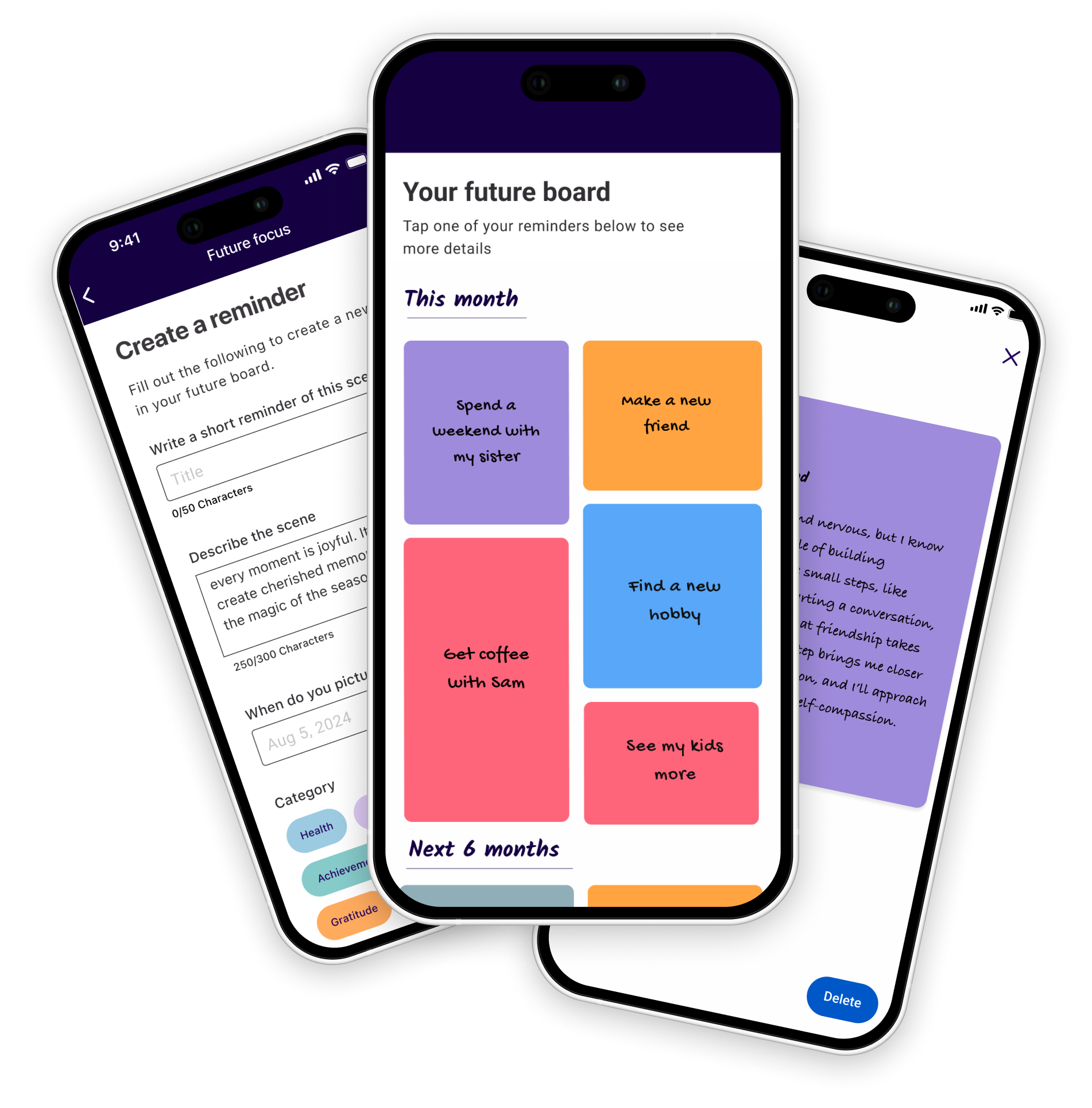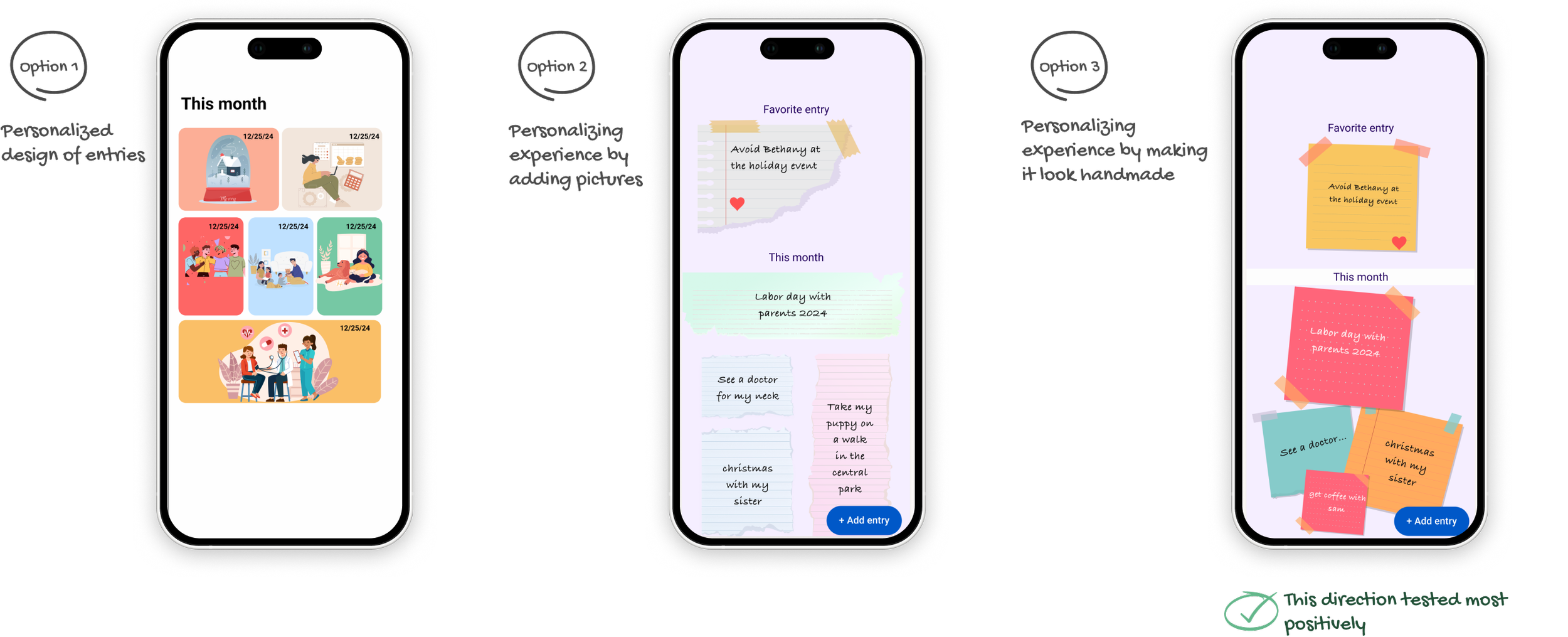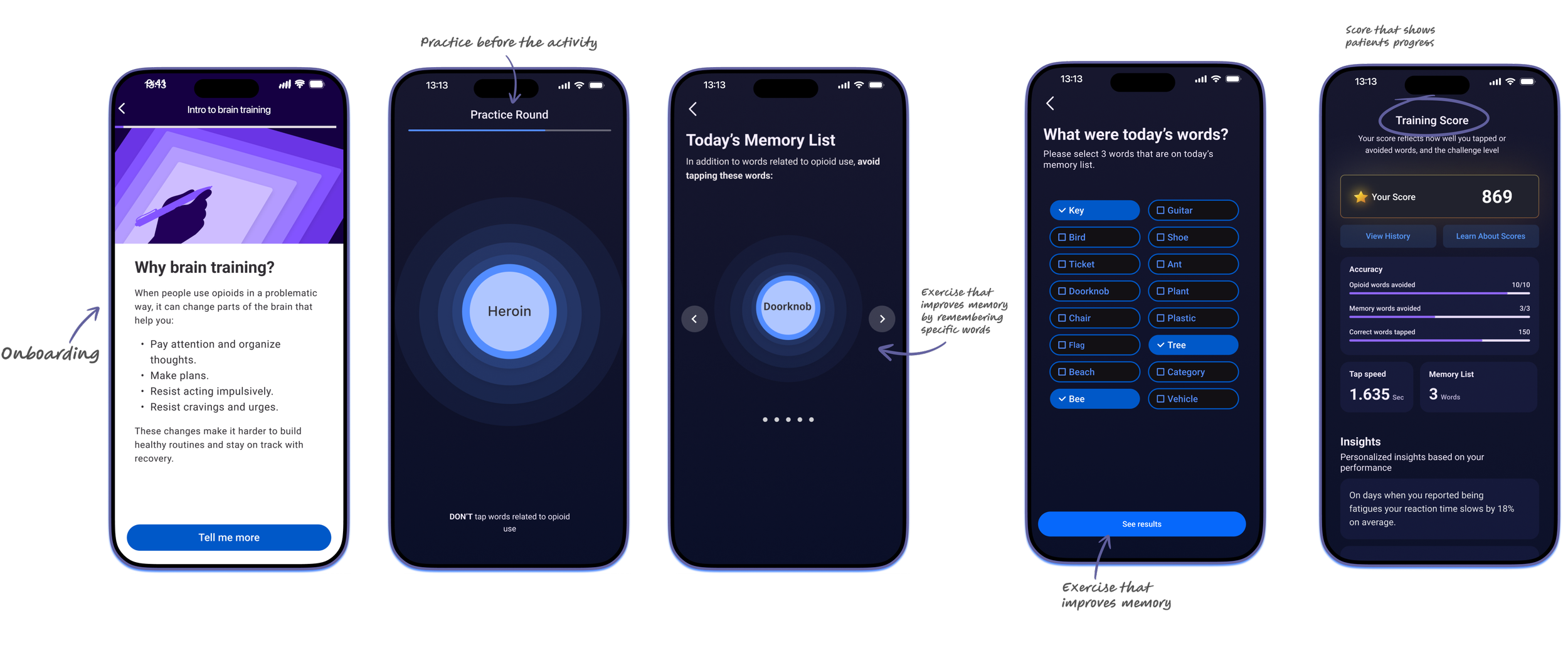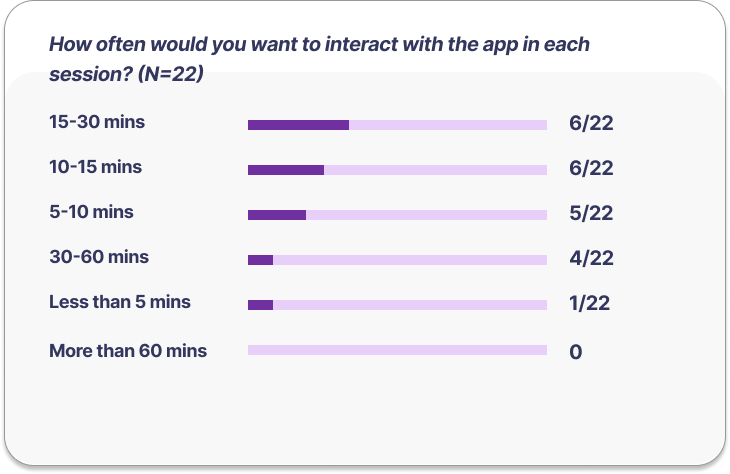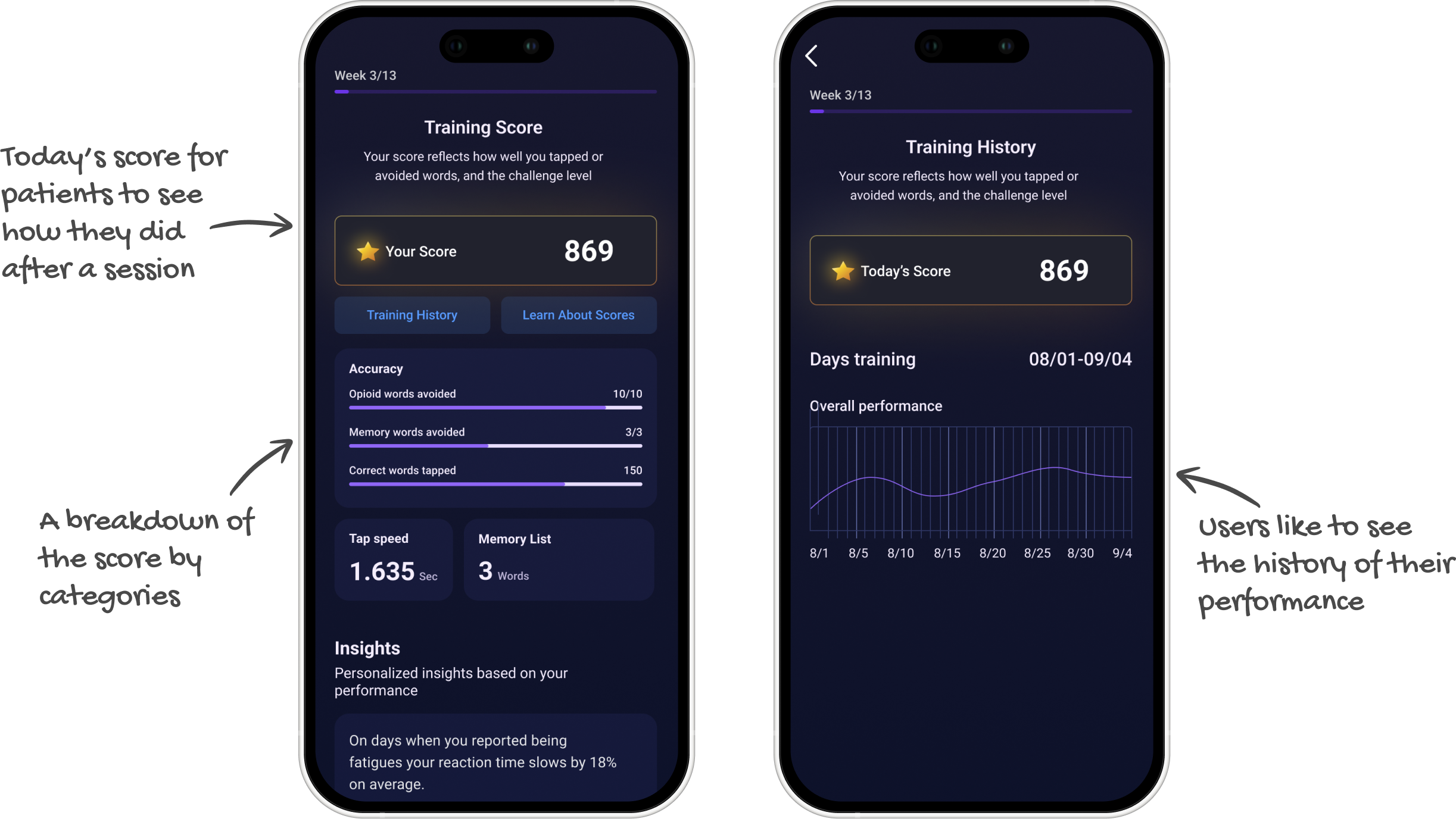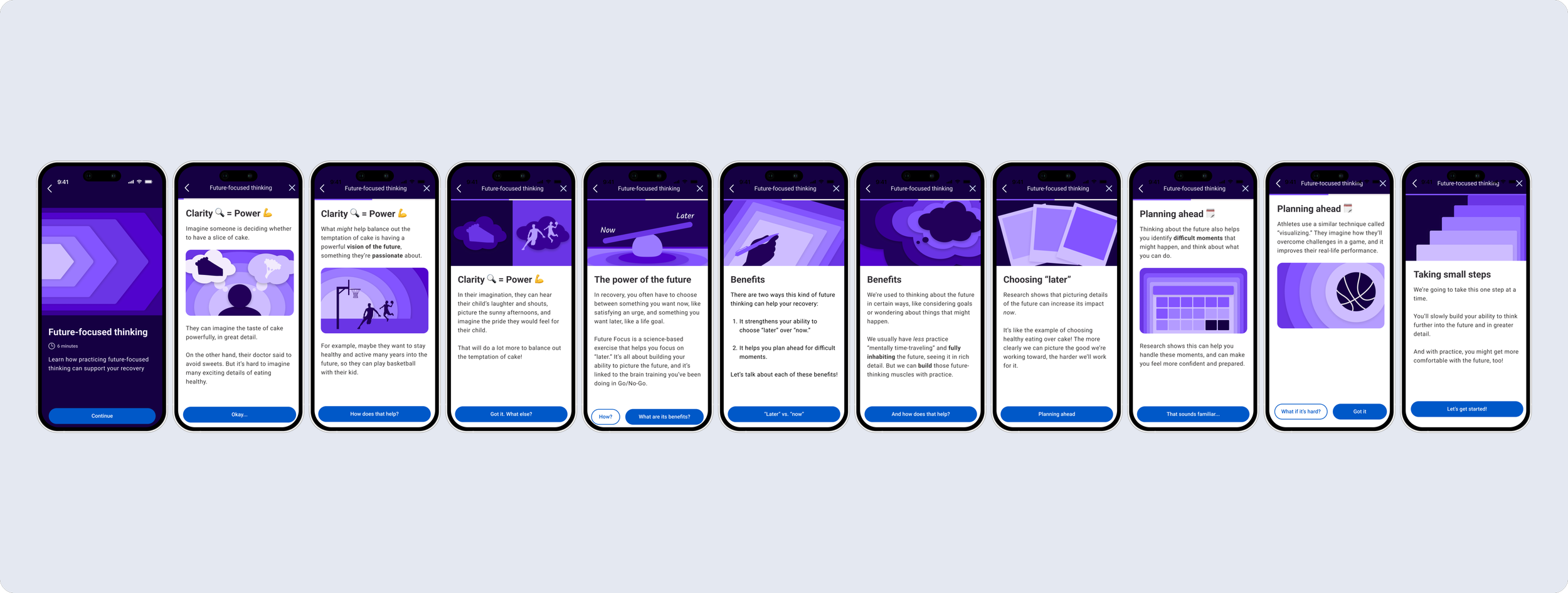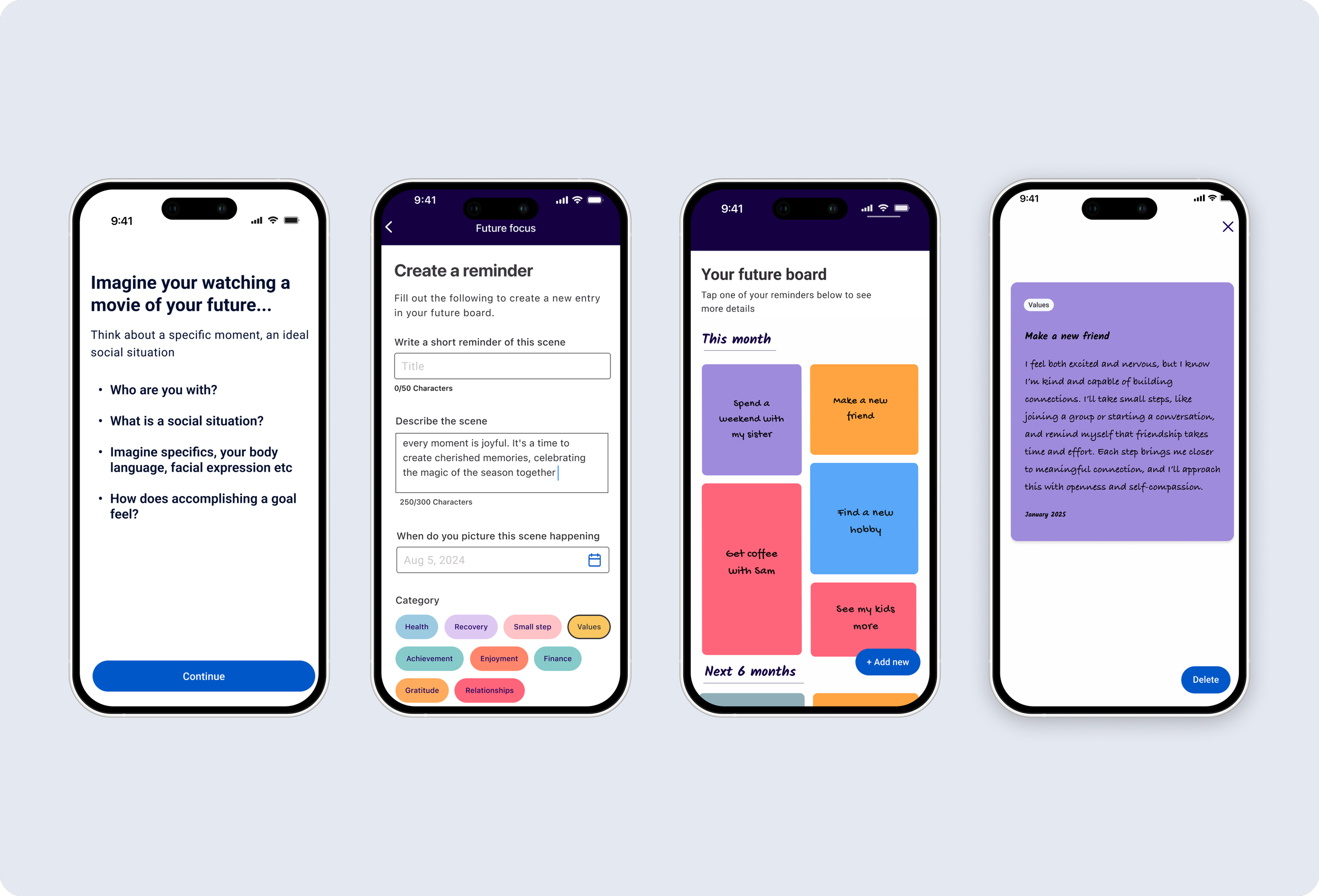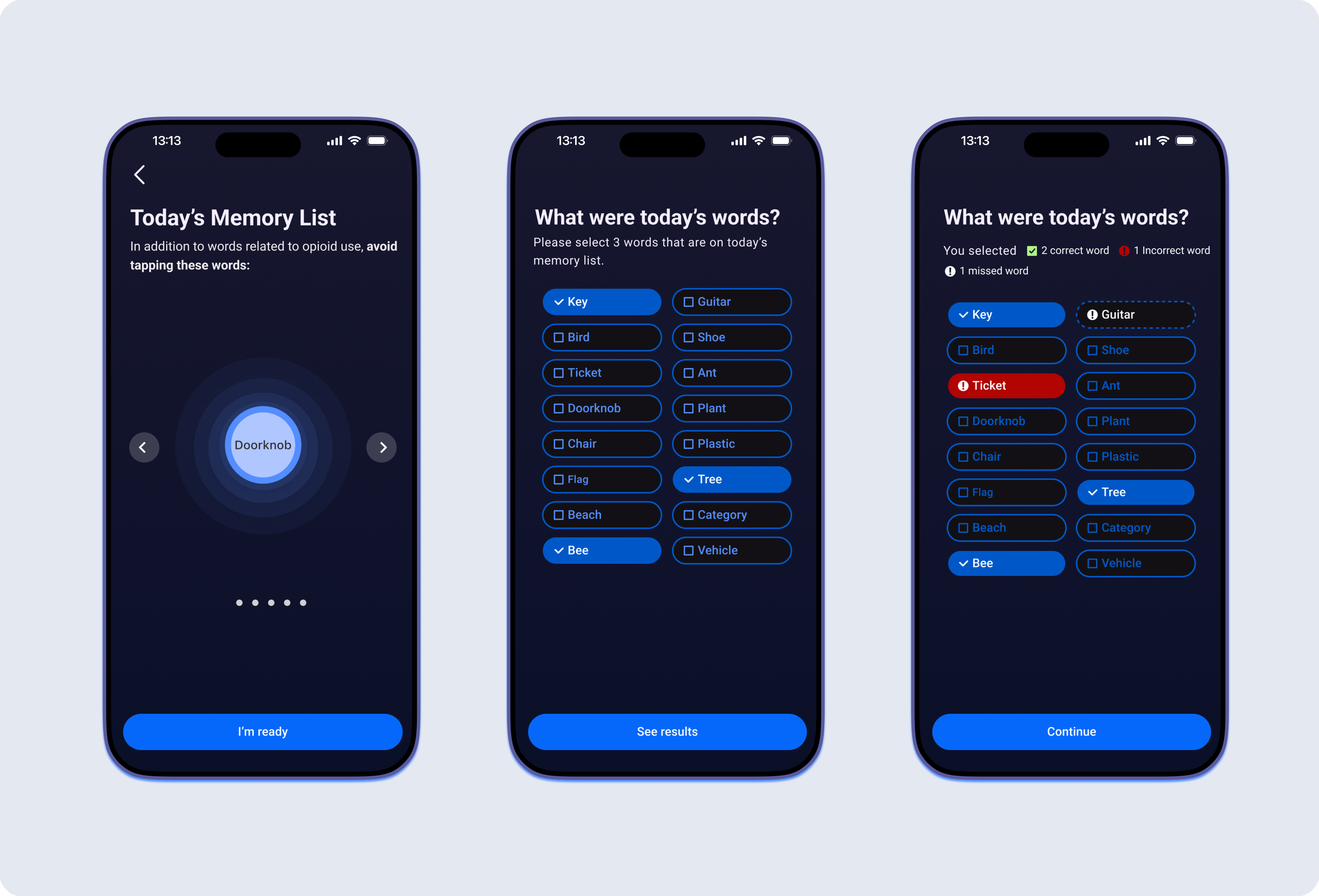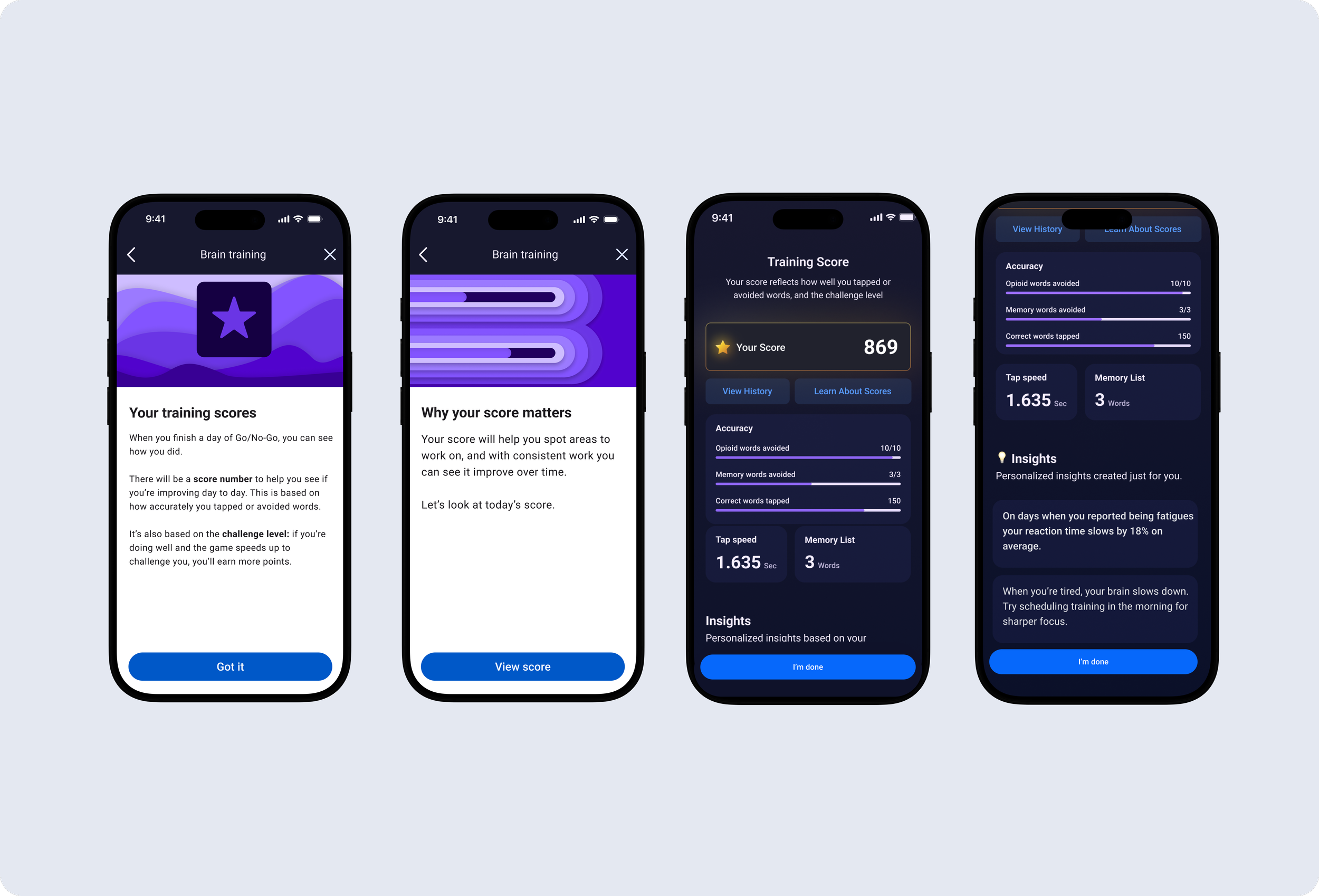Click Therapeutics - Brain training activities
Designing cognitive training experiences for behavior change
Project background
This feature set is part of a therapeutic app designed to rebuild focus and self-control during recovery. I led the design of two cognitive activities, Episodic Future Thinking and Go/No-Go, to boost motivation and impulse control. They blend cognitive behavioral therapy principles with accessible, gamified design.
Problem: People in recovery often struggle to stay motivated because long-term rewards feel distant, while immediate cravings and stressors dominate attention.
As a result, 70% of participants said they would use the app daily, reporting feeling more in control and optimistic about their progress. Engagement gains and positive outcomes helped secure Phase 2 funding for continued development.
My role: Lead Product Designer | Duration: 4 months | Team: UX Research, Product, Clinicians, Engineers
What is Episodic Future Thinking (EFT) and how does it work?
Episodic future thinking (EFT) is the ability to mentally "pre-experience" future events by simulating them in detail, including the emotions and contexts associated with them.
What is Go No/go?
Go/No-Go is a cognitive training activity that helps users strengthen impulse control and working memory through short, focused exercises that promote mindful reactions and support cravings management.
How do these 2 activities fit together?
EFT and Go/No-Go were designed as sequential activities within the user journey. EFT helps users strengthen motivation by visualizing their goals, while Go/No-Go builds the cognitive control needed to act on them.
Together, they create a daily feedback loop that reinforces both purpose and self-regulation in recovery.
Research
Understanding our users
The research goal was to understand what motivates people during recovery
Identify emotional drivers behind commitment and follow-through.
We interviewed 50 participants: patients, caregivers, and clinicians.
“Sometimes you can't think about even hours later because you're thinking so much about the moment. So I love this future focus.”
- Research participant patient
“I could see myself doing that a few times a week. If I'm being like, anxious and needing to calm down and kind of center myself. I could see myself doing that.”
- Research participant patient
Key findings:
Users were highly motivated but struggled to maintain momentum during moments of stress or craving.
Many found existing digital tools overwhelming or impersonal, making it hard to find timely support.
Users wanted quick, compassionate guidance rather than lengthy educational content.
Trust and emotional tone were critical; users responded best to calm, empathetic language and visuals.
Clinicians emphasized the need for consistent, low-friction tools to reinforce recovery routines between sessions.
These findings shaped our problem statement:
How might we help people in recovery strengthen motivation and self-control through visualization and daily brain training?
Goals
The goal was to translate cognitive science into emotionally engaging experiences that help users stay motivated and in control, visualizing future goals through EFT and strengthening focus through Go/No-Go.
EFT Vision board - testing and validating iterations
A Vision Board is a place where all future moments are stored.
Based on user interviews, I designed several iterations and tested to find the best way to store patients' entries.
Participants thought they might want to revisit the Vision Board daily to reflect on their progress and stay motivated.
They thought of it in terms of categories, though when presented with options on how the board might look and be organized, preferences were scattered over all options.
Personalization
During user interviews, we heard that patients wanted more personalized experiences, prompting design explorations. However, legal constraints barred the use of pictures. The images shown reflect some customization options we explored despite these limitations.
Iterating and validating final designs
Through testing, I found that users felt overwhelmed by goal-setting tasks and needed clearer guidance. I refined the design to be calm and structured, using color, motion, and micro-interactions to reduce cognitive load and enhance focus.
“I like the future-focused thinking right off the bat. Thinking about the future gives you a sense of hope. Sometimes you can't think about even hours later because you're thinking so much about the moment.“
- Research Patient
After designing EFT to help users connect emotionally with their future goals, we shifted focus to Go/No-Go, an activity that builds the cognitive discipline needed to follow through on those intentions.
Go/No-Go
The Go/No-Go experience centers around quick, focused interactions that train impulse control. Visual cues, immediate feedback, and subtle motion keep users engaged, while progress summaries reinforce accuracy and motivation over time.
Early design explorations
Initial concepts were guided by research and clinical requirements, then refined through iterative testing.
User research
Go/No-Go underwent a four-week clinical trial to understand how patients engaged with the game. Participants found the experience more challenging and rewarding than expected and wanted to learn more about the science behind how it strengthens cognitive control.
“Keep my mind focused and growing in a positive direction so that cravings become easier to ignore.”
- Patient
“Brain strengthens over time resonates because my memory is horrible. I've never heard that before. I knew you could strengthen your brain but I didn't know that someone who used opioids can do that. I thought that I screwed my brain permanently... it's nice to know that I can come back and to be reminded of that;. most people who have this problem need to be encouraged.”
- Patient
“I love the idea about retraining your brain to function properly without drugs, reframing things and reworking certain muscles.”
- Patient
Our understanding of the problem evolved through research:
How might we show meaningful progress and let patients know these activities are effective?
It was clear that patients needed a better scoring system to stay motivated and keep coming back.
Design and validation
The score screen evolved in response to patient feedback, as users wanted clearer insight into their performance and progress.
Score
Interviews revealed that users wanted clearer feedback and a way to track their progress across sessions, leading us to focus on more transparent performance insights.
Go/No-Go key screens
Brain training final outcomes
The brain-training program combined Episodic Future Thinking (EFT) and the Go/No-Go task to boost motivation and cognitive control in recovery. EFT helped users visualize future goals and connect emotionally to their progress, while Go/No-Go enhanced focus and impulse control through daily exercises. Together, these methods kept users engaged, managed cravings, and supported long-term recovery habits.
EFT user journey
Go/No-Go user journey
Outcomes and Results
User Impact
User testing confirmed strong engagement and emotional connection. 80% of participants said the brain training features helped them stay motivated and connected to their recovery goals, while 70% said they would use the app daily. Users described feeling more in control and encouraged by improvements in focus and self-regulation.
Business Impact
Early feedback validated brain training as an effective behavioral strategy for sustaining motivation between therapy sessions. These insights guided Phase 2 planning and secured further product investment.

